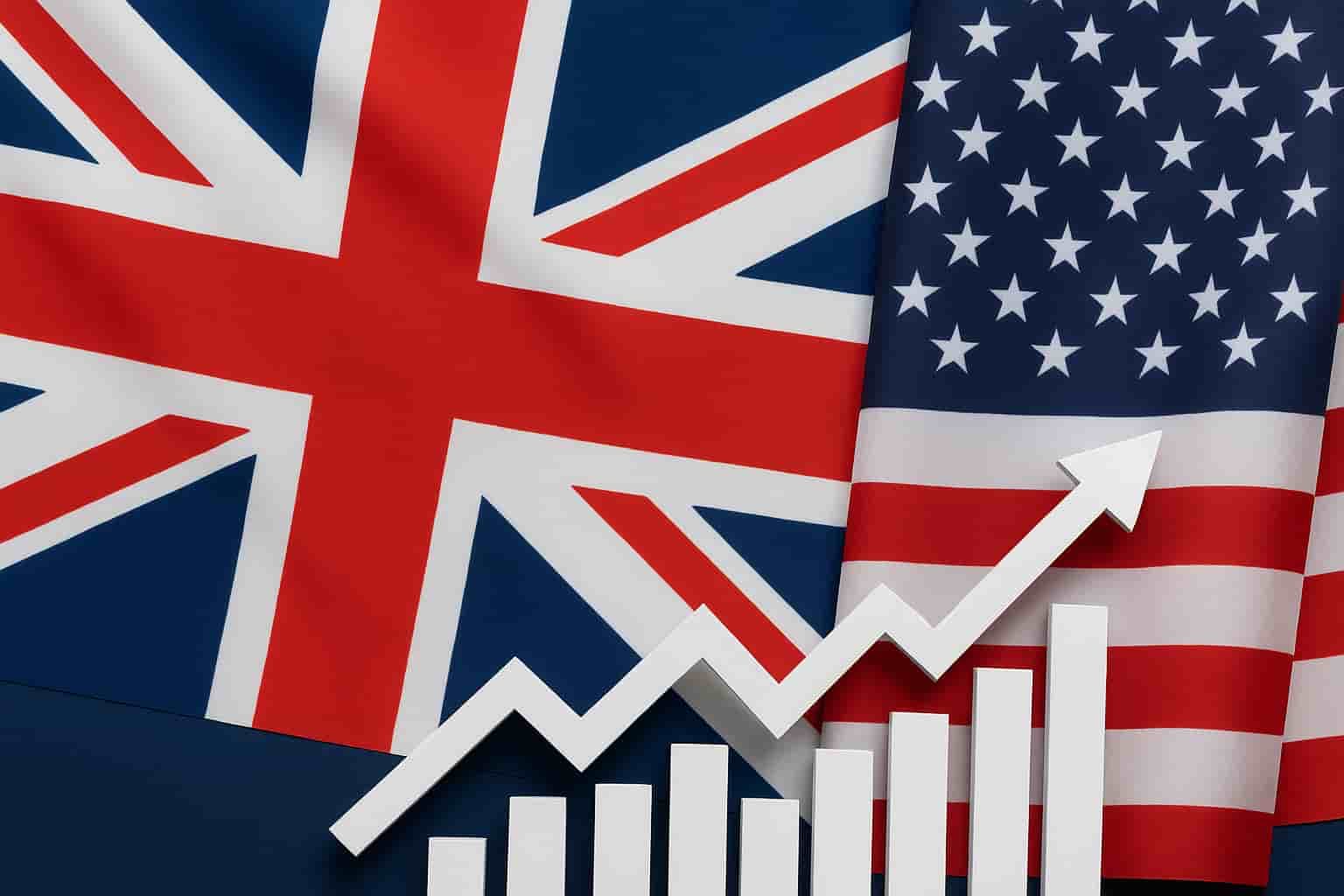The UK and the US have always shared a close economic bond. The partnership spans trade, investment, and finance. However, the 2025 tariff changes are set to transform this relationship. Let’s take a closer look at the impact of these changes on industries, investors, and both nations’ futures.
Trade Between Friends Gets a Shake-Up
Trade remains a cornerstone of the UK-US relationship, and the 2025 tariff changes are set to reshape this vital dynamic by promoting fairer competition. Reduced tariffs on luxury goods have created new opportunities for UK exporters aiming to attract American consumers. High-end products, such as premium cars and designer fashion, are now more competitive in the US market.
Conversely, increased duties on certain US tech imports have drawn attention from investors. Tech companies listed on the Nasdaq are feeling the impact, with potential ripple effects on the Nasdaq CFD price. While Britain’s stricter import regulations are likely to support domestic industries, US tech firms will need to adapt their UK strategies to maintain their market presence.
Opportunities For Key Sectors
Certain industries are set to benefit from the recent tariff updates. Advanced manufacturing in the UK, for instance, stands to gain significantly. Reduced tariffs on industrial equipment will lower the cost of importing American technology, offering British firms a valuable opportunity to improve their tools and processes.
However, challenges remain in the agricultural sector. US farmers are pushing for more favourable terms to export their products to the UK with reduced trade barriers, while British farmers raise concerns about being undercut by cheaper American produce. The key question is whether a balanced approach can be achieved that supports both sides without disadvantaging local businesses.
Professional services, including banking and law, are also a focus of these changes. The updated regulations are intended to make cross-border service provision easier, enabling UK professionals to work in the US and vice versa. These measures aim to strengthen collaboration between the two nations’ service-driven economies.
Investors Eye Opportunities
The tariff changes don’t just affect companies. UK and US investors also have a lot to consider. Markets are shifting as industries adapt. For example, new opportunities in renewable energy are emerging. Tariffs on green technology components have been reduced, which could result in growing business on both sides of the Atlantic.
For investors looking at shares, particularly in tech or manufacturing, the tariff reforms make careful market analysis essential. Both nations are competing to lead on innovation while boosting their exports. The tariffs act as levers that control the flow of capital between sectors.
Additionally, currency markets are reacting to the changes. Trade adjustments will likely influence the strength of the pound and the dollar. Diversifying portfolios now could prove smart for investors navigating this shifting landscape.
Political Pressures Behind the Changes
The 2025 tariff changes weren’t created in a bubble. Both governments faced mounting political pressure to revisit trade policies. UK leaders wanted to secure better deals after Brexit, aiming to strengthen the nation’s position on the global stage. Meanwhile, the US wanted adjustments to protect its industries from being undercut by foreign competition.
Public support for these changes varies. Some groups argue they go too far, while others say they don’t go far enough. The hope is that the tariffs strike a fair balance, promoting growth without damaging local businesses. Both governments will need to closely monitor the results to ensure the policies are working as planned.
What Could Happen Next
The dust is still settling from the 2025 tariff changes. But signs of what’s to come are already appearing. Trade flows between the two nations are expected to keep evolving as industries adapt. Smaller businesses, in particular, may find new opportunities. But they’ll need to stay informed about the legal and financial nuances of transatlantic trade.
Technology could play a bigger role in easing trade under these conditions. Blockchain, for example, may be used to track goods, verify their origin, and meet new regulations. Meanwhile, green energy cooperation may accelerate as tariffs on renewables encourage innovation.
For policymakers, the goal is clear. They need to fine-tune the system to nurture a stable UK-US economic relationship. If things go well, the 2025 tariff changes could strengthen ties. However, it could also pose risks if industries or investors feel left behind.
Final Thoughts
The 2025 tariff changes are redefining the dynamics of UK-US trade, with significant implications across industries such as manufacturing and technology. Businesses must reassess their strategies to align with the new regulations, while investors should carefully analyze emerging opportunities and risks. Governments also have a critical role in monitoring these developments to uphold equitable trade practices.
These changes represent a pivotal moment in the UK-US trade relationship, creating avenues for innovation, investment, and collaboration across sectors. Whether the new tariffs prove beneficial or detrimental will depend on the decisions made today. One thing remains certain: the trade partnership between the UK and the US continues to be of paramount importance.








